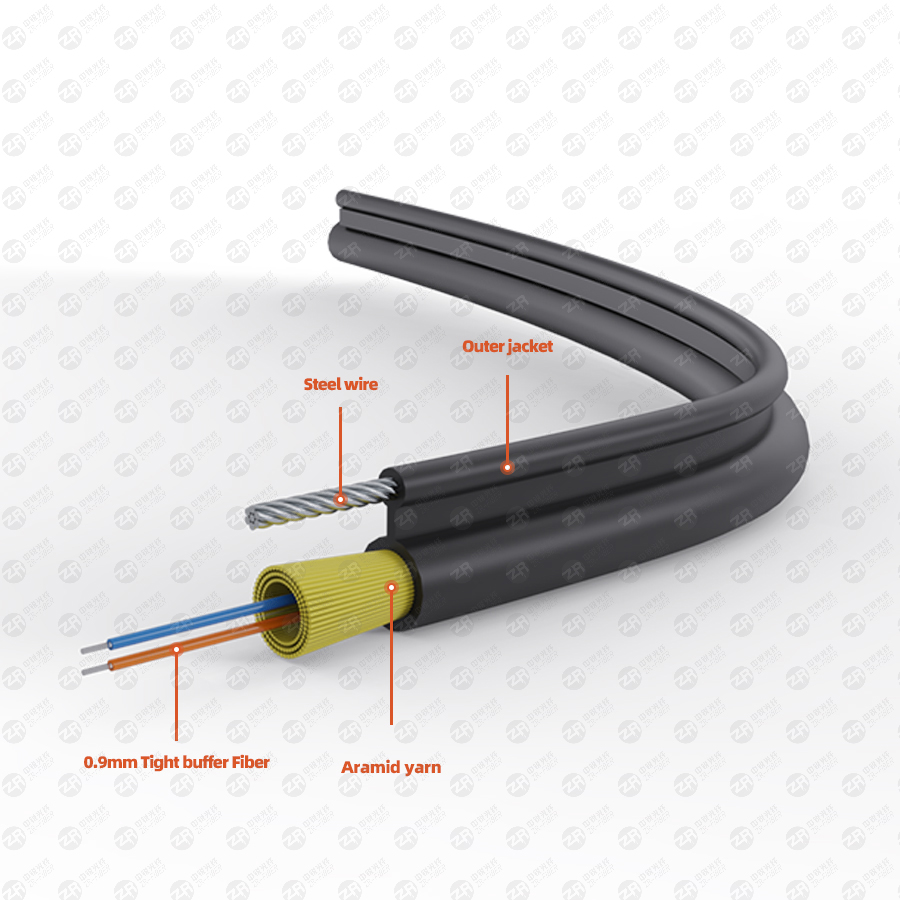- Sales SupportContact Sales
- Call us at: +(86) 15211074652
- Send us a email at: info@zr-fibercable.com
The characteristics of gradient refractive index fiber
Gradient refractive index (GRIN) fiber is an optical fiber that has a refractive index that changes continuously along its length. This design provides a unique set of optical characteristics that make GRIN fiber ideal for certain applications. In this article, we will explore the characteristics of gradient refractive index fiber.
Basic Structure of GRIN Fiber
The core of a GRIN fiber is typically made of a material with a refractive index that varies smoothly along its length. The refractive index gradient can be created by doping the core material with different amounts of dopants, by varying the diameter of the core along its length, or by other means. The cladding of the GRIN fiber is typically made of a material with a lower refractive index than the core, to ensure that light remains confined to the core.
GRIN Fiber Characteristics
Low dispersion: One of the main advantages of GRIN fiber is its low dispersion. Dispersion is the tendency of different wavelengths of light to travel at different speeds through a medium, which can cause signals to degrade over distance. GRIN fiber has a low dispersion because of its continuously varying refractive index. This makes GRIN fiber ideal for applications that require high bandwidth and long transmission distances, such as in telecommunication networks.

High bandwidth: GRIN fiber has a high bandwidth due to its low dispersion and low attenuation. Bandwidth refers to the amount of data that can be transmitted over a fiber optic cable in a given time period. The low dispersion of GRIN fiber allows for a wide range of wavelengths to be transmitted simultaneously, resulting in a high bandwidth.
Low attenuation: GRIN fiber has low attenuation, which refers to the loss of signal strength as light travels through a medium. The low attenuation of GRIN fiber allows for high-quality signals to be transmitted over long distances without the need for signal amplification. This makes GRIN fiber ideal for applications that require long-distance transmission, such as in telecommunications.
High numerical aperture: The numerical aperture (NA) of an optical fiber is a measure of the fiber's ability to capture light from a source and transmit it through the fiber. GRIN fiber has a high numerical aperture, which means it can capture more light from a source than a standard single-mode fiber. This makes GRIN fiber ideal for applications that require high light-gathering efficiency, such as in medical imaging and endoscopy.
Non-linear effects: GRIN fiber exhibits non-linear effects due to its varying refractive index. Non-linear effects occur when the intensity of the light is high enough to cause changes in the optical properties of the fiber, resulting in distortion of the signal. While this can be a disadvantage in some applications, non-linear effects can also be used to advantage in applications such as fiber amplifiers.
Applications of GRIN Fiber
GRIN fiber has a wide range of applications, including:
Telecommunications: The low dispersion, high bandwidth, and low attenuation of GRIN fiber make it ideal for use in high-speed telecommunications networks.
Medical imaging: The high numerical aperture of GRIN fiber makes it ideal for use in medical imaging and endoscopy applications, where high light-gathering efficiency is required.
Sensing: The low attenuation of GRIN fiber makes it suitable for use in sensing applications, such as temperature and strain sensing.
Laser delivery: The low dispersion and high numerical aperture of GRIN fiber make it suitable for use in laser delivery systems, where high-quality laser beams are required over long distances.
Conclusion
In summary, gradient refractive index fiber is an optical fiber with a continuously varying refractive index along its length. The unique characteristics of GRIN fiber, including low dispersion, high bandwidth, low attenuation, high numerical aperture, and non-linear effects
You might be interested in
We use cookies to ensure that we give you the best experience on our website. By clicking on "Accept" or continuing to use this site, you agree to our use of cookies in accordance with our Cookie Policy .You can refuse the use of cookies here.
Accept

